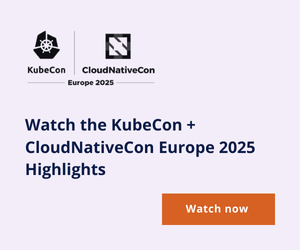-
Recruit Wizard scaled and moved to daily deployments with Octopus Cloud
Recruit Wizard transformed its software delivery by adopting Octopus Deploy for full deployment automation across Kubernetes and virtual machines. Moving from quarterly to daily deployments, the team now uses Config as Code and Runbooks to streamline releases, reduce errors, and empower non-engineering staff to run operational tasks independently. With Octopus Cloud, they’ve modernized and scaled their deployments while staying focused on growth and innovation in recruitment software.
-
The ten pillars of pragmatic deployments
Unlock the secrets to flawless software delivery! Explore the "10 Pillars of Pragmatic Deployments" that ensure repeatability, visibility, and auditability. Learn how to master rolling forward, standardize processes, and coordinate releases for robust, high-performing software pipelines.
-
Stack Overflow Uses Config as Code in Octopus for its Enterprise Solution
Stack Overflow adopted Octopus Deploy to streamline and scale its enterprise software delivery using tenanted deployments, automation, and Configuration as Code. By integrating application code, build, and deployment processes in a single GitHub repo, the team improved CI/CD efficiency, enabled better collaboration through pull requests, and reduced deployment times across multiple customers. Octopus's Azure support, API flexibility, and excellent customer service empowered Stack Overflow to standardize and mature its DevOps practices.
-
Five Reasons Standalone Vulnerability Scanning Isn’t Enough in 2025
Vulnerability scanning alone doesn’t cut it anymore. While it’s long been a core security practice, scanning tools can’t tell you which vulnerabilities are exploitable, how attackers would target them, or which ones pose real risk. This article explores the limitations of vulnerability scanning, the shortfalls of traditional vulnerability management, and why organizations must adopt a risk-based, context-driven approach to application security. Learn how to prioritize based on exploitability, integrate security across the SDLC, and move toward continuous, intelligent threat detection.
-
Top 15 Kubectl plugins for security engineers in 2025
Kubernetes security is evolving fast—and so should your tools. This roundup of the top kubectl plugins for 2025 spotlights essential extensions that help security teams audit RBAC, trace runtime activity, manage secrets securely, and respond to threats in real time. Whether you're managing complex clusters or chasing compliance, these plugins supercharge your command line with the visibility and control you need.
-
Practical AI security in multi-cloud environments
As organizations rapidly adopt generative and agentic AI tools across multi-cloud environments, securing those systems has never been more critical. This article explores the key challenges of AI security—such as visibility gaps, runtime threats, and compliance pressures—and outlines best practices for building a strong AI security posture. From continuous monitoring with Falco to managing AI-specific risks with frameworks like MITRE ATLAS and OWASP AI, learn how to protect your AI infrastructure against evolving threats and regulatory demands.
-
Scaling Docker Usage with JFrog
Worried about Docker Hub rate limits? Discover how JFrog’s universal artifact manager and container registry ensures uninterrupted Docker usage by proxy caching, enabling authentication, and providing unlimited public Docker Hub downloads via JFrog SaaS, helping you scale seamlessly.
-
Top 5 features to look for in a cloud detection and response solution
Cloud detection and response (CDR) is essential for securing modern hybrid and multicloud environments, where traditional tools fall short. This article explores the key challenges facing security teams—like lack of runtime visibility, alert fatigue, and skill gaps—and outlines how purpose-built CDR solutions like Sysdig address them. From real-time visibility and automated threat correlation to AI-powered threat investigation, discover what to look for in a CDR platform that delivers speed, context, and control across your entire cloud infrastructure.
-
Introducing Support for Chocolatey and PowerShell Packages
Unwrap more universality! JFrog Artifactory now officially supports Chocolatey and PowerShell packages within its NuGet repositories, giving Windows users unmatched flexibility for package management, streamlined automation, and solidifying JFrog as the ultimate universal solution
-
Mitsubishi UFJ e-Smart Securities Optimizes Package Management and Automates Deployment with JFrog
Mitsubishi UFJ e-Smart Securities has historically faced challenges around optimizing deployment and package management. By adopting the JFrog Software Supply Chain Platform, the company has transformed its approach to DevOps and realized significant improvements in security, efficiency, and speed.
-
Fintech Developer Streamlines Software Production with JFrog’s Release Lifecycle Management
A multinational financial technology firm improved security and compliance by adopting the JFrog Platform for software releases. Using immutable release bundles and controlled promotion, they minimized risks while maintaining strict regulatory standards. JFrog’s Release Lifecycle Management (RLM) capabilities reduced manual intervention, allowing teams to focus on innovation.
-
National Energy Operator’s Journey to DevSecOps Excellence with JFrog
This energy operator and facilitator oversees key national electricity and gas markets. By adopting the JFrog Platform, they transformed their software development operations and security practices, achieving significant operational efficiencies, enhanced security, and millions in cost savings.
Filter & Sort



















